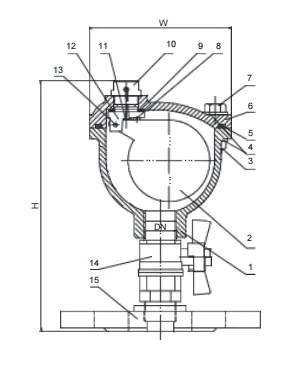Effective Solutions for Water Leak Prevention with Pipe Clamps
The Importance of Water Leak Pipe Clamps A Comprehensive Guide
Water leaks can be a major issue for homeowners and businesses alike. They can lead to extensive water damage, mold growth, and increased utility bills. One effective solution to tackle water leaks is the use of pipe clamps, specifically designed to seal leaks and prevent water loss. In this article, we will explore the significance of water leak pipe clamps, their types, and how to properly install them.
Understanding Water Leak Pipe Clamps
A water leak pipe clamp is a specialized device designed to grip around a pipe and seal any leaks that may be occurring. Made from durable materials such as stainless steel or heavy-duty plastics, these clamps are built to withstand the pressure of the fluid within the pipes, ensuring a reliable seal. They are a cost-effective and straightforward solution for both residential and commercial plumbing issues.
Types of Water Leak Pipe Clamps
There are several types of water leak pipe clamps, each catering to different needs and circumstances
1. Single-Screw Clamps These are basic clamps that consist of a single screw mechanism to tighten around the pipe. They are commonly used for small leaks and can be easily installed without the need for specialized tools.
2. Double-Screw Clamps Offering more stability than single-screw clamps, double-screw clamps have two tightening mechanisms. This design ensures a more secure fit, making them suitable for larger pipes and more significant leaks.
3. Rubberized Clamps Rubberized clamps feature a rubber lining that cushions the pipe, providing an additional layer of protection. They are ideal for use on fragile or older pipes that may be prone to damage from rigid clamps.
4. Epoxy-Coated Clamps These clamps are coated with a layer of epoxy to resist corrosion. They are excellent for outdoor applications where moisture and environmental factors may lead to rapid wear of standard metal clamps.
water leak pipe clamp

Installing a Water Leak Pipe Clamp
Installing a water leak pipe clamp is a relatively simple process. Here’s a step-by-step guide
1. Identify the Leak Before installation, locate the source of the leak. This may require inspecting pipes for visible signs of water damage or using a moisture meter for hidden leaks.
2. Prepare the Area Clean the area around the leak to ensure that the clamp adheres properly. Remove any debris, oil, or rust that may hinder the seal.
3. Select the Right Clamp Choose a clamp that fits the diameter of your pipe. Measure the pipe’s circumference to select the right size.
4. Position the Clamp Place the clamp directly over the leak. Ensure that it is centered and that the rubber lining (if applicable) fully covers the damaged area.
5. Tighten the Clamp Using the appropriate tool, start tightening the clamp. Ensure that it is secure but avoid over-tightening, as this could damage the pipe.
6. Test for Leaks Once installed, turn the water supply back on and check for any remaining leaks. If leaks persist, reassess the clamp installation or consider using a different type of clamp.
Conclusion
Water leak pipe clamps are a vital tool in plumbing maintenance that can save homeowners and businesses alike from the consequences of water damage. Understanding the different types of clamps and how to install them can provide a long-lasting solution to leaks, ensuring peace of mind and protecting your property. Regular inspection of pipes and prompt action when issues arise will maintain the integrity of your plumbing system and prevent costly repairs in the future. Whether you are a DIY enthusiast or a professional plumber, having the right knowledge about water leak pipe clamps is essential for effective leak management.
-
The Smarter Choice for Pedestrian AreasNewsJun.30,2025
-
The Gold Standard in Round Drain CoversNewsJun.30,2025
-
The Gold Standard in Manhole Cover SystemsNewsJun.30,2025
-
Superior Drainage Solutions with Premium Gully GratesNewsJun.30,2025
-
Superior Drainage Solutions for Global InfrastructureNewsJun.30,2025
-
Square Manhole Solutions for Modern InfrastructureNewsJun.30,2025
-
Premium Manhole Covers for Modern InfrastructureNewsJun.30,2025
